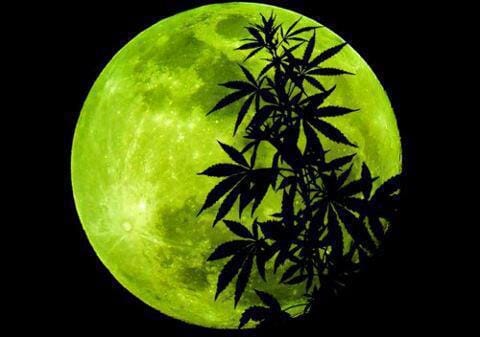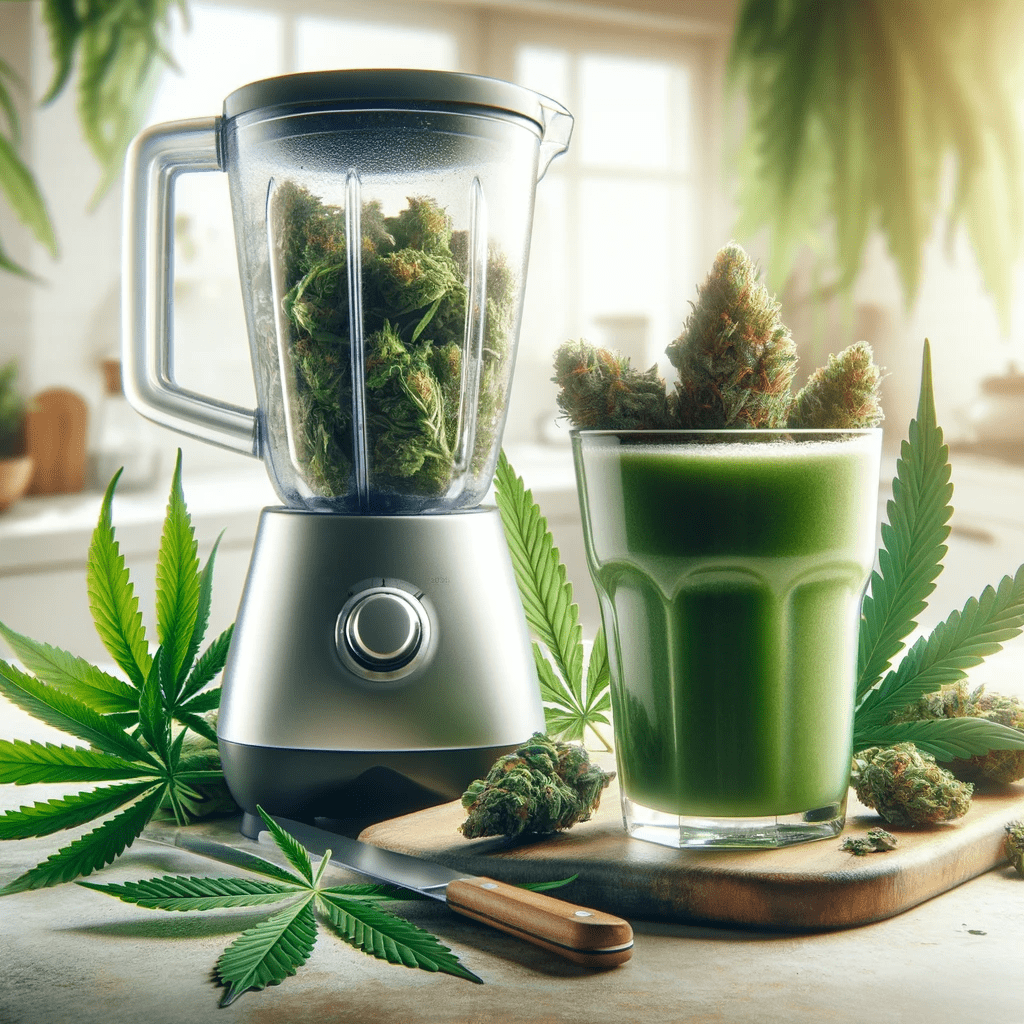By: Juan Sebastian Chaves Gil
You’ve likely heard or read about the preparation of marijuana juice, sparking your curiosity to give it a try. Therefore, we’ve decided to dedicate a specific article to this innovative way of utilizing cannabis to harness its remarkable benefits without experiencing significant side effects.
The recipe for this medicinal cannabis-based beverage is attributed to Dr. Courtney, a recognized physician and activist in the cannabis field who has dedicated himself to researching and promoting the impressive benefits of marijuana juice for those interested in tapping into them. While it’s a unique way to consume marijuana, it’s essential to note that there are no scientific studies that fully endorse its benefits at 100%.
After providing a brief introduction to marijuana juice, we’ll delve into its nature and how to prepare it.
What exactly is marijuana juice?
Marijuana juice is a beverage made from the leaves, stems, branches, and buds of both male and female marijuana plants. It has been associated with various health benefits and the potential to alleviate symptoms of various diseases and conditions. Its preparation is simple and can be done at home with relative ease.
Dr. William L. Courtney is the pioneer behind this marijuana beverage. He is a physician with extensive experience in the medical field and a passionate advocate for the multiple benefits of marijuana juice. His notoriety skyrocketed globally after one of his patients, Kristen Perkuski, who suffered from lupus, an autoimmune disease that mistakenly affects healthy cells and tissues, experienced significant improvement in her multiple issues through marijuana juice treatment, allowing her to lead a more normal life
What are the benefits of marijuana juice?
Throughout history, the benefits and applications of marijuana and hemp plants have been widely recognized. In this case, the benefits of the juice are attributed to the cannabinoids produced by the plant, such as THC, CBD, CBN, and CBG, among others. Additionally, chlorophyll, terpenoids, flavonoids, alkaloids, and components like magnesium and proteins also play a role. However, for the most part, the beneficial effects come from cannabinoids.
Benefits include disease prevention, anti-inflammatory properties, improved immune system, antioxidants, prevention of molecule oxidation, increased metabolism, antibacterial properties, protein and amino acid contribution, analgesic effect, anti-convulsive properties, appetite stimulation, antidepressant and antimetastatic properties, improved healing, supply of vitamins A, C, and E, blood oxygenation and purification, improved digestion, diuretic effect, among others.
It’s important to note that many of these benefits are attributed to chlorophyll, which is comprehensive and could be considered part of a healthy daily diet. Its advantages include reducing cholesterol and triglycerides, promoting ulcer healing, improving calcium absorption, boosting memory, balancing glucose levels, and combating fungi and bacteria.
Furthermore, to achieve such a broad and comprehensive effect, it’s crucial to consume cannabinoids in their acidic form, such as THC-A and CBD-A. This minimizes the psychoactive effect and allows optimal utilization of the benefits of these substances in their acidic form.
It’s essential to consider that marijuana juice does not produce a significant psychoactive effect unless heated or used with marijuana or dried leaves. In the worst case, it may cause a mild sense of well-being due to the combination of terpenes in marijuana. If decarboxylated material is used, the effect will be much more potent.
How is marijuana juice prepared?
First and foremost, it is essential to select plant material from plants treated exclusively with 100% certified organic products. The use of plants cultivated with manure, chemicals, or other elements not classified as organic or vegan should be avoided. Subsequently, the material should be quickly rinsed with quality water or distilled water to remove dust and ensure cleanliness.
Another crucial requirement for optimal results is to use fresh plant material. Dry or partially dry marijuana is not suitable; it should be freshly extracted from a live plant as much as possible. Dr. Courtney recommends using 12 medium-sized leaves and a couple of early-harvest buds, also of medium size. Small branches and trunks can also be used.
The plant material is placed in a blender with a little water and mixed until it reaches a dense but liquid texture. If the mixture seems too thick, a little more water can be added. This way, we will obtain our medicinal marijuana juice.
How is marijuana juice consumed?
Once the juice is prepared with the mentioned quantities of plant material, it is recommended to divide it into three parts and consume it throughout the day. This is the most common recommendation. Before ingestion, it should be mixed with another natural juice, such as carrot juice, in a ratio of 9 parts carrot juice to 1 part marijuana juice. This enhances the taste and facilitates consumption. This marijuana juice can be stored in the refrigerator for a maximum of three days from preparation.
It is not advisable to consume marijuana juice for people with gallbladder problems, kidney problems, or those who are pregnant.


 Cannabis News1 year ago
Cannabis News1 year ago
 One-Hit Wonders1 year ago
One-Hit Wonders1 year ago
 drug testing5 months ago
drug testing5 months ago
 Cannabis 1011 year ago
Cannabis 1011 year ago
 Marijuana Business Daily1 year ago
Marijuana Business Daily1 year ago
 Education1 year ago
Education1 year ago
 Education1 year ago
Education1 year ago
 Cannabis1 year ago
Cannabis1 year ago



















